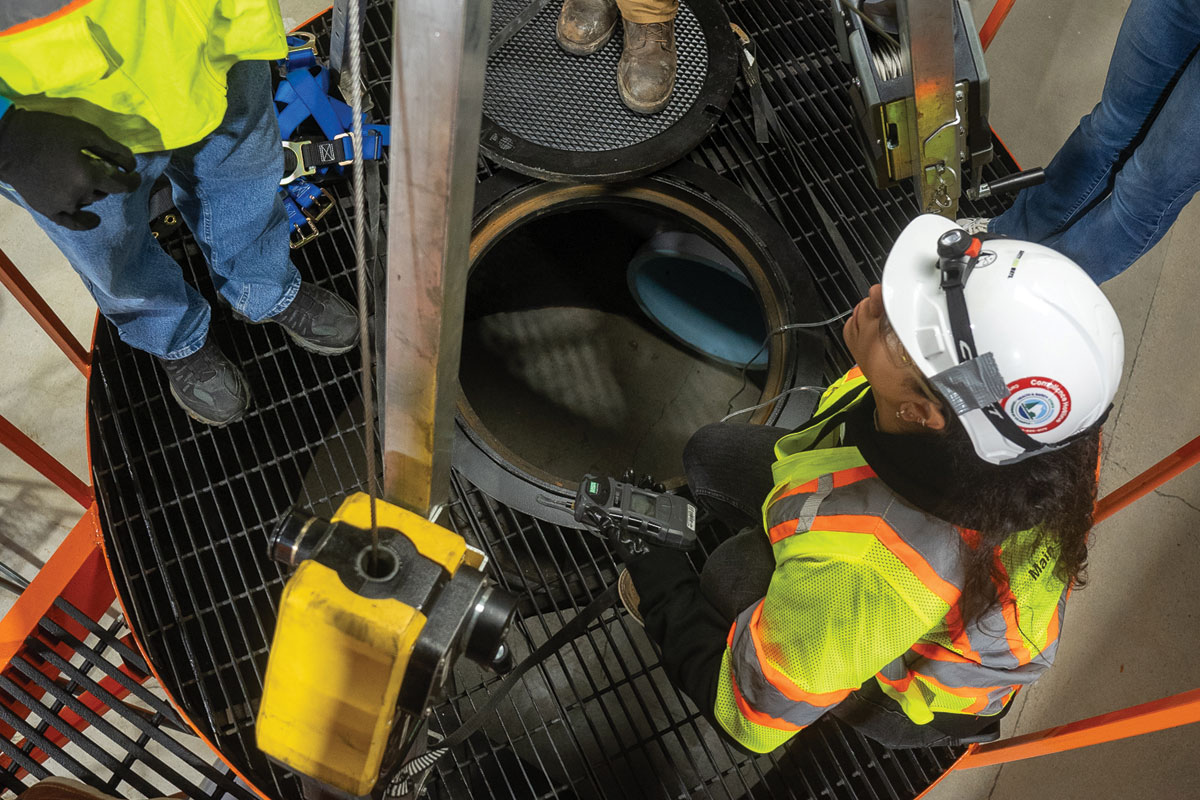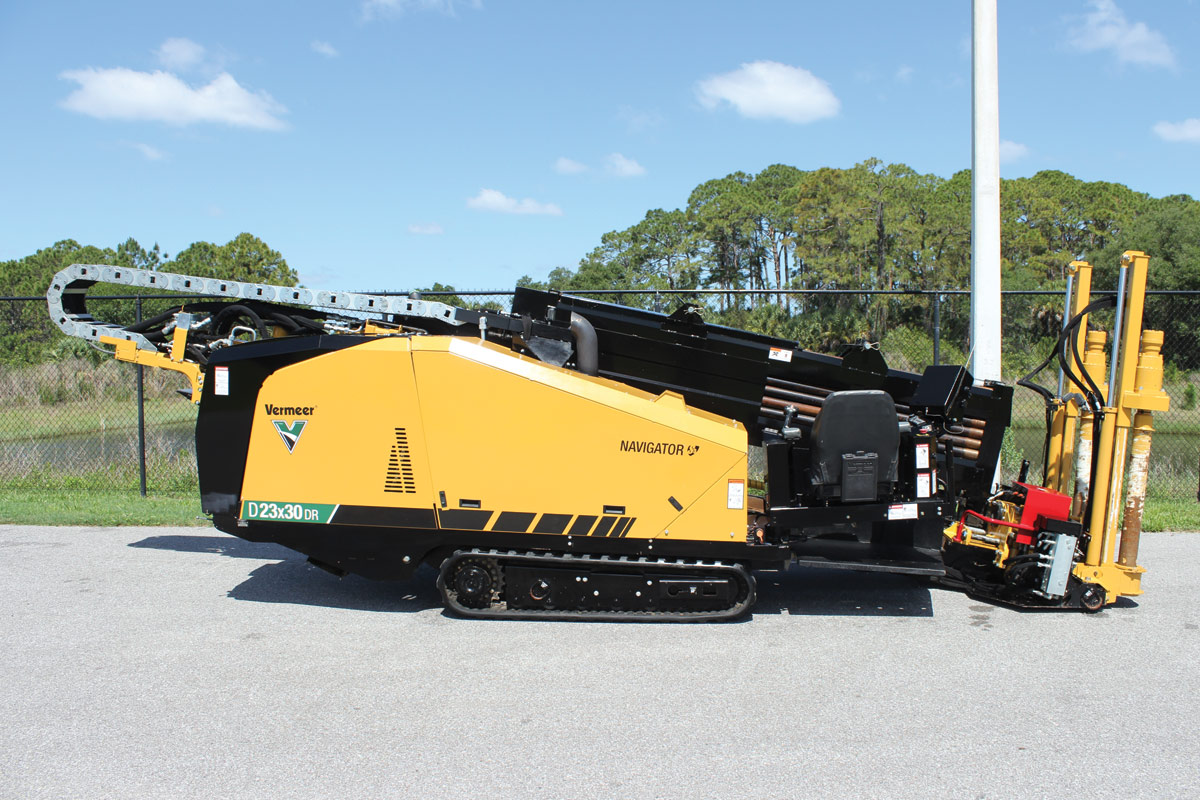
2015 Top 10 Trenchless Design Firms Notable Projects
December 16, 2015
Leading Design Firms Achieve New Heights in Trenchless Engineering in 2015
Click here to see the 2015 Top 50 Trenchless Design Firms
CH2M
CH2M, as part of a multi-firm team, was awarded the Combined Sewage Storage Tunnel (CSST) project in Ottawa, Ontario, Canada. This $130 million project involves 6 km of tunnel through the downtown core of Ottawa, including a section directly in front of Parliament. With celebrations for Canada’s 150th birthday to take center stage in Ottawa in 2017, construction in the downtown core must be complete by December 2016. The CSST is the keystone project of the city’s Ottawa River Action Plan, designed to improve water quality in the Ottawa River and the development of a long-term strategy to ensure the health of Ottawa’s water environment. CH2M will be delivering the majority of the tunnel and shaft design work, and will be the on-site lead during construction. CH2M’s portion of the fees for the assignment is $4.5 million.
Hatch Mott MacDonald
In June 2015, Duke Energy completed construction on a natural gas pipeline beneath the Ohio River. The new 16-in. diameter pipeline, passing through a tunnel drilled through bedrock about 115 ft below the river bottom, replaces two free-floating 12-in. pipelines that were installed in 1947.
Hatch Mott MacDonald provided design and construction management services for the challenging 2,275-ft crossing, which used horizontal directional drilling (HDD) to link Covington, Ky., with Cincinnati, Ohio.
Design challenges included determining the most appropriate and cost-effective method for crossing the Ohio River, working within an urban area with very limited pipe string areas and coping with thick deposits of sands, gravel and cobbles overlying interbedded shale and limestone. The project required working beneath regulated levees, working next to and beneath an Interstate-75 Bridge and a major hotel, and potential obstructions including deep water wells, wood piling from old railroad trusses and existing utilities. Noting that local gas usage has increased by four and a half times since 1950, Duke Energy said the new pipeline will provide safe and reliable service for 70 years or more.
AECOM
AECOM was selected to provide preliminary and detailed design and contract administration services to the City of Calgary (CoG), Alberta, Canada for the Bowness Sanitary Offload Trunk project. When completed, the project — the largest microtunneling project to date in Calgary — will provide additional sanitary sewer capacity to meet future wastewater loads.
The project, as originally proposed, involved construction of approximately 2.3 miles of approximately 65-in. sewer with a twin 35-in. siphon crossing of the Bow River, largely requiring open-cut construction to depths of a 26 to 33 ft. During design development, AECOM raised concern over the technical feasibility of open-cut construction, its true capital cost and the social and environmental impacts. On account of these aspects, the decision was made to advance a full microtunneling solution.
AECOM also helped create a comprehensive public engagement program, undertook a geotechnical and hydrogeological program, prepared a Geotechnical Base Line Report and detailed 3D finite element modeling for a crossing of a critical CoG water main. Microtunneling operations are now complete, with commissioning scheduled for late 2015, almost one year ahead of the initial schedule.
Arcadis North America
Arcadis was designer-builder for rehabilitation of leaking sewer pipelines in the Town of Sullivan’s Island, S.C. The project goal was to lower leakage from the sewer system by 25 to 40 percent and to stabilize the structural condition of the pipes for the next 30 years. Arcadis assisted the town in planning and obtaining funding for the project and was selected to deliver the construction manager-at-risk (CMAR) project as the design-builder.
Leveraging knowledge of trenchless technologies, industry contacts and construction means and methods, Arcadis developed an innovative Stabilize-Assess-Prioritize-Rehabilitate (SAPR) project delivery approach that allowed the town to assist with selecting the specialty subcontractors and materials best suited to the town’s specific issues. Seven subcontracted construction firms employed specialized trenchless construction methods for pipe rehabilitation. Nearly 39,000 ft of sewer, including more than 450 laterals were sealed during a five-month period.
Stantec
The City of Ottawa, Canada’s capital city, has an ambitious goal to drastically reduce combined sewer overflows (CSOs) into the Ottawa River. Stantec previously upgraded the city’s flow-regulating structures and implemented an automated real-time control system. This reduced annual CSO volume by 60 to 70 percent. To address the remaining volume, Stantec completed an environmental assessment and found that the preferred solution was a deep tunnel storage.
Stantec then developed a preferred alignment and completed the functional design in 2012. Stantec recently finished final design and the project is now moving into construction. The tunnels are 2.7 miles and 1-mile long, respectively, and each 9.8 ft in diameter, adding 11.5 mg of storage. Depths range from 66 to 115 ft with six major drop shafts 6.5 to 9.8 ft in diameter. Project challenges include a compressed schedule; tunnel and shaft construction in the downtown core, including adjacent to major government buildings; low rock cover; faults in the rock mass; and the presence of sensitive, compressible marine clay.
CDM Smith
CDM Smith is the ongoing program manager for the City of Columbia, S.C. Clean Water 2020 Program. This is an ambitious program of projects and initiatives developed for the city-owned and operated wastewater system. This multi-year Clean Water 2020 Program (CW2020) is designed to improve water quality and protect the safety and health of citizens by focusing on wastewater system assessment, infrastructure renewal and upgrades and operational improvements.
The CW2020 Program will result in reviewing and upgrading a significant portion of the wastewater collection system, numerous pumping stations and portions of the city’s wastewater treatment plant that discharges into the Congaree River. These improvements are intended to increase the wastewater system’s operational efficiency and reliability. A major focus of the program is to greatly reduce occurrences of sanitary sewer overflows (SSOs). These overflows of wastewater can be the result of undersized infrastructure, wet weather events allowing rain water to enter leaky pipes, and other common operational problems such as sewer blockages caused by roots, grease or sewer collapses.
Black & Veatch Corp.
Black & Veatch is providing wastewater collection system planning, design and construction phase services for the rehabilitation and replacement of portions of the existing sanitary sewer system for the City of Grand Island, Neb.
Phase 1 of the project included installation of approximately 7,000 ft of 54-in. closed profile wall PVC pipe and associated fiberglass manholes. Phase 1 also included sliplining of approximately 5,000 ft of 30- and 36-in. pipe with 24-in. HDPE pipe, approximately 700 ft of microtunneling (60-in. casing pipe, 42-in. carrier pipe) for a highway and railroad crossing, and 130 ft of microtunneling (27-in. direct jacked pipe) for a waterline crossing.
Phase 2 of the project includes installation of approximately 20,000 ft of 48-in. diameter FRPM pipe and associated fiberglass manholes. The 48-in. interceptor also includes four tunnels ranging from 135 to 520 ft in length and a mixture of direct jack and casing pipe installations. Additionally, Phase 2 includes the installation of five new sewer lines ranging in size from 12-in. to 21-in. that were designed in order to convey flow by gravity from five of the city’s existing lift stations to the new North Interceptor.
Jacobs Engineering Group
Jacobs recently completed a design-build project for JEA in Jacksonville, Fla. The project involved a 6,572 ft HDD crossing of the St. Johns River with 36-in. steel pipe for a new water transmission line. Jacobs partnered with Haskell and Michels to evaluate the base route, propose an alternate route with fewer design challenges and complete the HDD design. The design was fast tracked to minimize impacts to events at the adjacent Everbank Field Stadium (home of the Jacksonville Jaguars). For construction, the intersect method was used with conductor casings on both sides of the crossing. Pullback of the 36-in. diameter steel pipe was assisted by a hydraulic thruster. More trenchless projects are being constructed using the design-build contracting mechanism. .
Cardno Inc.
The I-4 Ultimate Improvement Project in Orange and Seminole Counties, Fla., includes the reconstruction of 21 miles of I-4 from west of Kirkman Road in Orange County to east of State Road 434 in Seminole County. In May 2014, the Florida Department of Transportation–District V selected I-4 Mobility Partners to design, build, finance, operate and maintain this project. As a member of the public-private partnership (P3) team, Cardno provided surveying and mapping, utility coordination and subsurface utility engineering services.
This estimated $2.3 billion project adds four tolled express lanes to I-4 while maintaining the existing free general use lanes, providing a choice to motorists. The express lanes will be operated with variable tolls which will be adjusted to improve traffic flow throughout the corridor. Additional characteristics include: 13 widened bridges, 74 replaced bridges and 53 new bridges, 15 reconstructed major interchanges, a distinctive pedestrian bridge as well as a variety of anesthetic elements to enhance the Central Florida landscape. This is the largest transportation infrastructure project in Florida’s history. Upon completion, I-4 will be a signature corridor connecting communities, supporting economic growth and enhancing livability throughout the area, while spotlighting what truly makes Central Florida unique.
Brown and Caldwell
Brown and Caldwell performed evaluation, design and construction support for rehabilitation and upgrade of the Orange County Sanitation District’s (OCSD) 60-year-old Newport Force Main (NFM), which consists of two parallel, interconnected ductile iron pipelines with diameters varying from 20 to 36 in. It conveys up to 36 million gallons per day (MDD) of wastewater flow through more than five miles of pressure pipe along the Pacific Coast Highway to OCSD’s treatment plant in Huntington Beach.
This project is essential for OCSD to maintain a reliable and effective wastewater collection system and to convey flows from three sewage lift stations in Newport Beach, Calif. Its benefits include extended service life, protection of coastal resources and public health, increased system reliability and reduced risk of sewer spills.
More than half of the NFM system was rehabilitated using GFR-CIPP to minimize impacts to the community, businesses, tourism, and the environment. Approximately 1,000 lf of new 32-in. HDPE was installed in a 42-in. microtunneled steel casing. In addition, 150 lf of 24-in. HDPE was installed in a 36-in. bored and jacked steel casing to connect to the Lido lift station, and 32-in. and 36-in. HDPE was used to replace the balance of project piping using traditional cut-and-cover techniques.
Tags: 2015 December Issue




